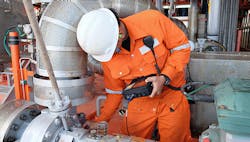Basic process safety procedure in 9 steps
May 3, 2022
2 min read
Many types of safety software and other digitalized tools are available lately, but they must still be applied as part of a logical process safety program. Here are the primary steps included in most thorough process safety investigation, planning and implementation projects:
More on process safety
This article is part of a series on process safety. Check out the rest of the series here.
- Seek and establish true commitment from management to the process safety program.
- Draft a multi-disciplinary safety team with participants from operations, maintenance, engineering, instrumentation, analysis, IT and administration.
- Conduct a hazards and operability (HazOp) study, and investigate changes from routine performance for every operating process.
- Perform a risk assessments (RA) wherever significant deviations are identified, and determine their severity and frequency. RAs can employ traditional regular qualitative tools, including risk graphs and layers of protection analyses (LOPA).
- In cooperation with the company's existing risk policy and procedures, employ RAs and LOPAs to determine appropriate risk levels for equipment and applications, and apply safety integrity levels (SILs) for each component and process.
- Evaluate if present safety functions are enough to handle existing issues identified by the newly established SILs, RAs and LOPAs. If they're enough, document them. If they're insufficient, find and fill gaps in the safety application.
- Integrate safety requirements into organization's overall safety policy and requirements.
- Extend safety beyond individual components and processes to create a wider radius of possible safety functions for performance, optimization, lifecycle and other areas.
- Implement, maintain, and periodically reexamine and upgrade process safety functions.
About the author: Jim Montague
Jim Montague is executive editor of Control. He can be contacted at [email protected].
About the Author
Sign up for our eNewsletters
Get the latest news and updates

Leaders relevant to this article:


